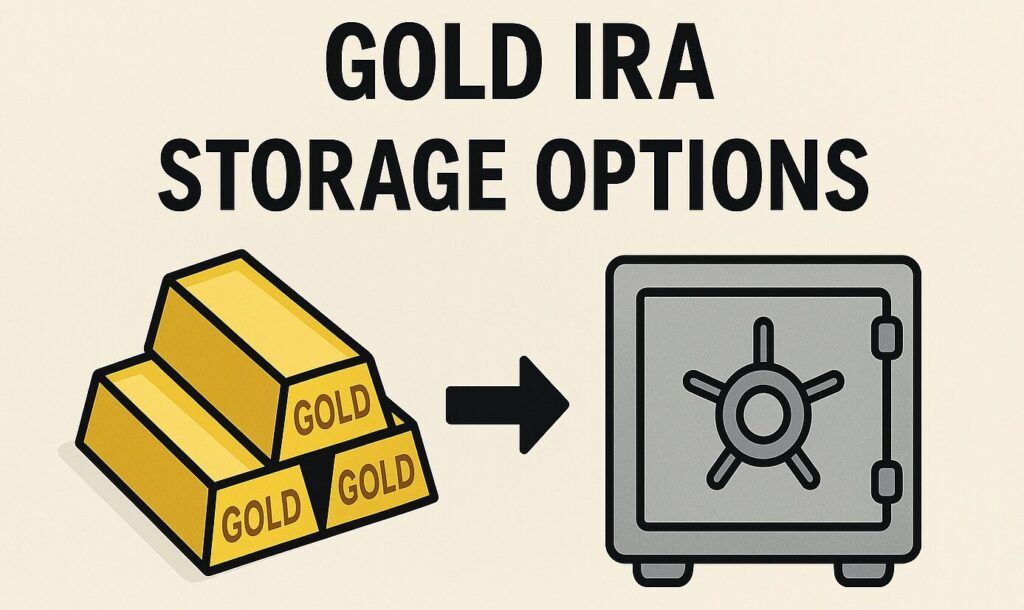
When investing in a Gold IRA, where you store your precious metals matters just as much as what you invest in. Your storage decision impacts not just your security — it determines your IRS compliance, your tax benefits, and your peace of mind.
In this guide, we’ll break down the differences between storing gold at home and using a professional depository. You’ll learn what the IRS requires, the risks and rewards of each option, and which strategy makes the most sense for different kinds of investors.
If you’re holding metals inside a self-directed IRA, the choice is clear: IRS-approved vault storage is the only compliant — and truly secure — way to protect your retirement. But if you’re investing outside of an IRA, there may be a place for discreet, secure home storage for smaller holdings.
Let’s explore the pros and cons of each.
Understanding Gold IRA Storage Requirements
The IRS requires that all precious metals held in an IRA be stored by a qualified trustee or custodian. These include:
- Banks
- Federally insured credit unions
- Savings and loan associations
- IRS-approved non-bank trustees or custodians
Why? Because maintaining the tax-advantaged status of a Gold IRA depends on proper custody and reporting. Violating these rules could result in your IRA being disqualified and taxed as a distribution.
The Reality of Home Storage IRAs
The idea of storing your IRA gold at home is often promoted as a way to maintain personal control. But in practice, it rarely complies with IRS rules.
Here’s what “home storage” IRAs usually involve:
- Creating a self-directed IRA that invests in an LLC
- The LLC purchases metals
- The LLC stores the metals at a “business premises” you control
While this sounds clever, the IRS has repeatedly disallowed these arrangements, often ruling that direct or indirect personal possession violates IRA rules. The risks include:
- Full taxation of your IRA assets
- A 10% penalty for early withdrawal if you’re under 59½
- Additional penalties for prohibited transactions
For most investors, it’s simply not worth the risk.
Vault Storage: The Compliant, Secure Alternative
IRS-approved depositories are the gold standard (literally) for IRA storage. These facilities are built for security, transparency, and regulatory compliance.
Two primary types of storage:
- Allocated:
- Your metals are stored separately and tagged specifically to you
- Serial numbers and bar IDs are tracked
- Higher fees, but maximum assurance
- Commingled (Unallocated):
- Your holdings are pooled with others, but your ownership is recorded
- More cost-efficient with similar levels of security and insurance
Either way, your metals are protected, insured, and verifiable. View our guide on segregated or allocated storage to understand which option best suits your needs.

GoldSilver: Investing in Physical Metals Made Easy
GoldSilver lets you invest in real physical precious metals with flexible options to buy, sell, store, and take delivery. You’re in complete control.
Open an AccountVault Benefits:
- 24/7 monitored facilities
- Armed guards and biometric access
- Full insurance coverage
- Regular third-party audits
- Disaster-hardened storage locations
- Fast, easy selling or delivery on demand
Security: The Hidden Risk of Home Storage
Many investors underestimate the physical risks of keeping precious metals at home:
- Theft: Safe or no safe, home break-ins happen
- Disaster: Floods, fires, earthquakes
- Insurance gaps: Most homeowner policies cap precious metal coverage at $1,000–$2,500
- Privacy risk: Word getting out could make you a target
By contrast, professional vaults are:
- Armed, monitored, and access-controlled
- Fully insured and regularly audited
- Geographically diverse and disaster-resistant
- Built to store billions in assets—not just one investor’s holdings
Explore our vault storage options to understand the comprehensive security measures professional facilities implement.
Making the Smart Storage Choice
Choosing the right storage strategy depends on your goals, account type, and comfort level. If you’re investing through a retirement account, IRS-approved depository storage isn’t just recommended — it’s required for compliance.
For investors who want hands-on access to a small amount of metal for personal use or emergency preparedness, home storage outside of an IRA can make sense.
But for those looking for a blend of convenience, security, and peace of mind — without legal risks or logistical headaches — vaulting is the smarter, simpler solution.
Conclusion: Store with Confidence
The idea of having your gold close at hand might be tempting, but for Gold IRAs, home storage simply isn’t worth the legal risk or physical exposure.
With IRS-approved depository storage, you get the security, compliance, and peace of mind your retirement deserves. Your metals are insured, protected, and available to you when you need them—without jeopardizing your tax benefits.
At GoldSilver, we make it easy to invest and store with confidence. Whether you’re opening a new Gold IRA or reassessing your current strategy, our expert team is here to help.
Want to know more about our storage options? Reach out today — and let’s protect your future, together.
Get Gold & Silver Insights Direct to Your Inbox
Join thousands of smart investors who receive expert analysis, market updates, and exclusive deals every week.
Disclaimer: This article is for informational purposes only and should not be considered financial advice. Historical performance is not indicative of future results. Always conduct thorough research or consult with a financial advisor before making investment decisions.












